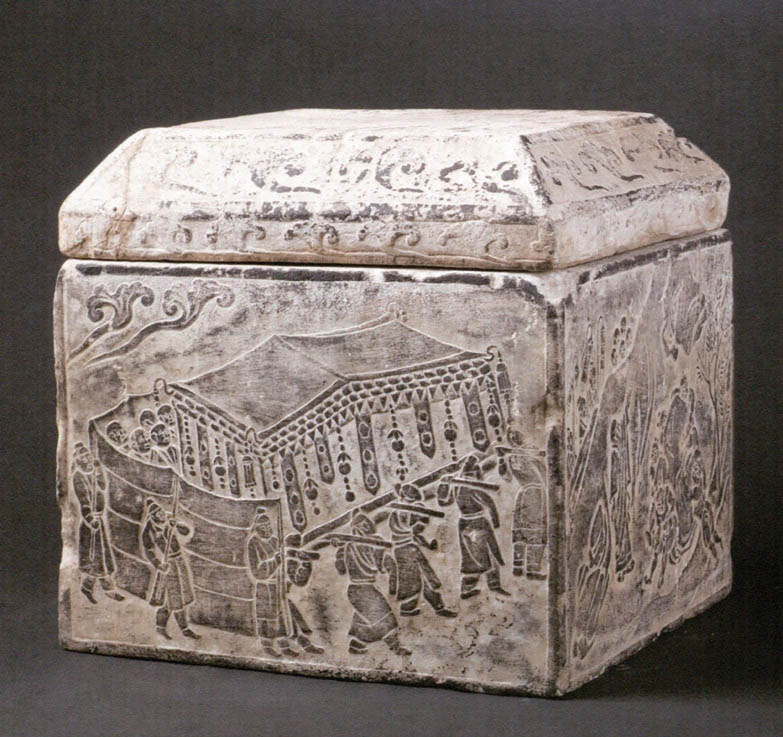Making the sacred: relics and reliquaries in medieval China
Buddhist relics [sārira] are believed to be the physical remains of Buddha’s body after his death [Parinirvāṇa] and cremation. Reliquaries, containers of relics, to a certain extent signify the existence of relics and act as the physical embodiment of relics that are hidden inside. The practice of venerating Buddhist relics has been commonly observed across Asia in history. This essay focuses on Buddhist reliquaries and practices of relic veneration in medieval China. Adopting a cross-disciplinary approach that combines art history, Buddhology, and history, my research hopes to shed more light on how reliquaries and relic veneration rituals were tied to the viewers, the political power, and the city space in medieval China.
The practice of venerating Buddhist relics first appeared in India, and later spread to Central Asia, and then to China. Our current understanding of the relic veneration ritual, by and large, depends on the archaeological discovery of reliquaries. Relic containers found in India, mainly made of stone or crystal, usually consist of a round bowl and a cover with a knot. Their decoration is relatively simple, featuring several circles of rings around the body. Reliquaries from the Gandharan region are larger in number and more diversified in shape compared to the Indian reliquaries. One type of Gandharan reliquary that had a cylindrical body decorated with rings around the body later entered into China proper. But it did not take long before this style was replaced by the ‘square-body and mansard roof-cover’ form, which first appeared during the fifth century and was regarded as indigenous Chinese style. When Emperor Wen of the Sui dynasty (r.581-604) distributed relics nationwide in the years 601 to 604, he also preferred the ‘square-body and mansard roof-cover’ as the standard form of reliquary. This form persisted into the Tang dynasty (618-907 CE) and was visible in the visual representation of relic distribution. The decoration of the reliquaries developed into a more complex scheme, such as the stone reliquary uncovered in Lantian County, Shaanxi Province (fig.1). While the form of the Lantian reliquary follows the Chinese tradition, its decoration speaks about connections with early Indian legends and Gandharan Buddhist art. Details of the images carved on four sides represent scenes not just from the Buddhist cannon, but also inspired by Buddhist encyclopedia.

Fig. 1: Stone reliquary, Lantian County, Shaanxi Province. After Taipei Lishi bowuguan bianji Weiyuanhui. 2010. Shengshi huangchao mibao: Famensi digong yu dating wenwu tezhan 盛世皇朝秘寶:法門寺地宮與大唐文物特展. Taipei: Taipei lishi bowuguan, p.198.
The relic veneration ritual reveals the interaction between Central Asia and China as well. In the year 403, Monk Faxian observed a ritual ceremony of displaying relics when he visited the city of Hidda (醯羅城), in modern-day Afghanistan. He recorded that the king held a ceremony involving the display of Buddhist relics in a glass case, and the stupa that hosted the reliquary was opened regularly. The practice of exhibiting the relics on a regular base was also observable in Tang China, where relics were taken out from monasteries to be displayed every 30 years. On the Lantern Festival of 704, relics hosted at the Famen Temple were taken from the pagoda’s underground palace to Tang’s East Capital Luoyang. The Famen relics were juxtaposed with the Nine Tripods (jiuding 九鼎, the symbol of heavenly mandate) in the Bright Hall (mingtang 明堂, the symbolic supreme shrine). In this way, the Buddhist relics and reliquaries were staged and shown as a statement of the political power, which was comparable to the Nine Tripods. The ceremony of displaying relics at Tang’s Western capital Chang’an engaged more with the general public. We can conclude that displaying the Buddhist relics was of paramount significance since it invoked religious enthusiasm among worshippers, built a close connection linking the sacred relics and the urban space, and created a visual tie between the religious power and the political supremacy.
YU Wei is an Assistant Professor at the School of Art, Southeast University
cuteyw@sina.com